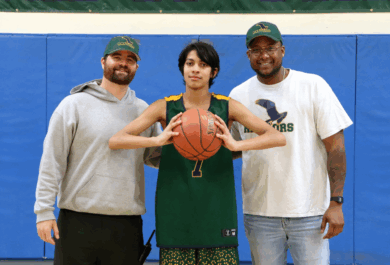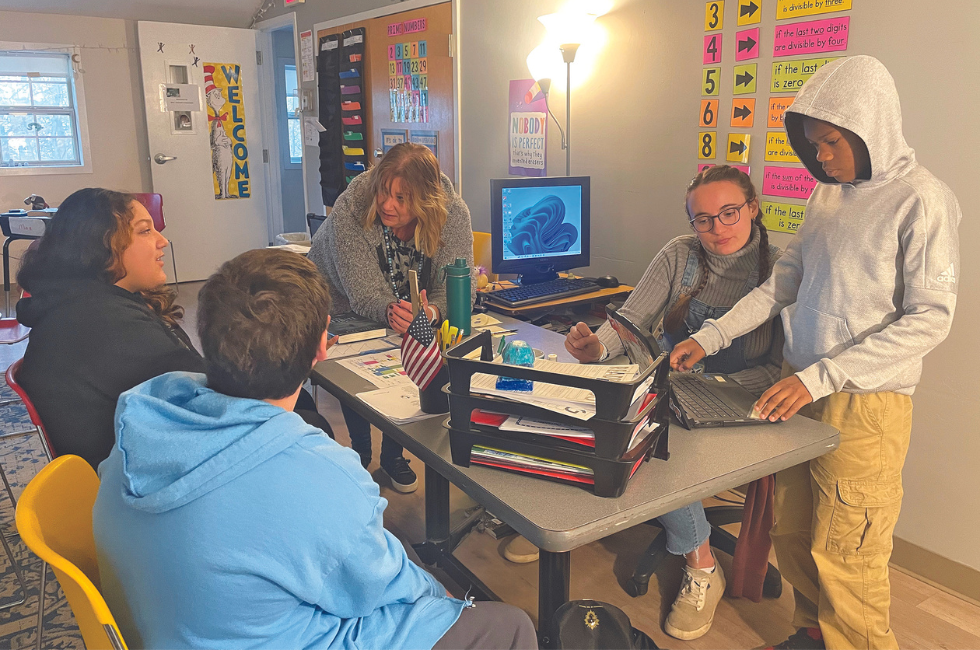Announcements


The safe and supportive environment established for all who attend, and work at, Green Chimneys is the product of a philosophy and practice called Restorative Practice. This recognized social model promotes effective conflict management and open communication, the foundation for maintaining a psychologically safe environment.
“When individuals feel an innate sense of safety with their words, feelings and thoughts they are more apt to thrive, progress and strive individually, and to create and maintain healthy communities around them,” says Green Chimneys Social Services Director Jenna Eckna. “These communities can exist among co-workers/departments, between supervisors/supervisees, in classrooms and in Green Chimneys’ case, in dorms. Ensuring this sense of safety and connectedness for staff, students and families has led the agency to immerse itself in the Restorative Practice framework as a general form of functioning.”
As a recognized social model, Restorative Practice serves to improve and repair relationships within a system that connects the entire community in a way that each member is able to resolve conflict, and actively work towards the betterment of the group.
Misty Sinistore has worked directly with Green Chimneys students for 28 years and is currently a teaching assistant for 6th and 7th graders at Clearpool Campus. “The students we serve are not always accustomed to being empowered as a part of the resolution process, and the steps that go beyond an apology for an incident,” Misty explains. “When dealing with situations that involved unsafe situations, bullying or potential danger, we typically responded to the challenging behaviors. Then, students made amends and strategized coping skills to use in the future, and returned to their activities. While this method is helpful, I feel it puts out fires in the moment and there’s not enough learning and concern for the larger community.”
An extensive training program for Clinical, Support and Education staff broadened the approach to interventions by incorporating the perspective of those impacted. Productive discussions among peers probe the feelings of each individual, both during an incident and after. Primarily, these discussions create a better understanding of how a situation may have escalated, how it affected each person, and how to repair the relationships.
First, the student who initiated an incident is asked: ‘What were you thinking at the time?’ ‘What have you thought about since the event?’ ‘Who has been affected by what you did and how might they have been feeling?’
In turn, students who experienced the incident are prompted to share: ‘What impact has this incident/situation had on you and others?’ ‘What has been the hardest thing to deal with concerning this issue?’ ‘What do you think needs to happen to make things right?’
“I feel that this method really makes the student with the challenging behavior think about how their behaviors affected the group. In other words, talking helps them to feel remorseful and empathetic,” says Misty. “It brings the community together as a whole. It also sends a strong message to the students that they can be heard, feel safe, and express their feelings without fear of retaliation.” Foundationally, teaching youth to solve problems together and move ahead in a positive manner paves the way for healthy interactions throughout their school careers, and far into the future.

Crowned the best for falconry in medieval times, gyrfalcons were once reserved for kings. As the largest falcon in the world, with exquisite plumage ranging from bright white to deep charcoal, gyrs are revered for their powerful skill of flight. Their long wings make hunting waterfowl from 3,000-feet-high a feasible and fantastical feat. This falcon was flown in the sport of falconry for several years.